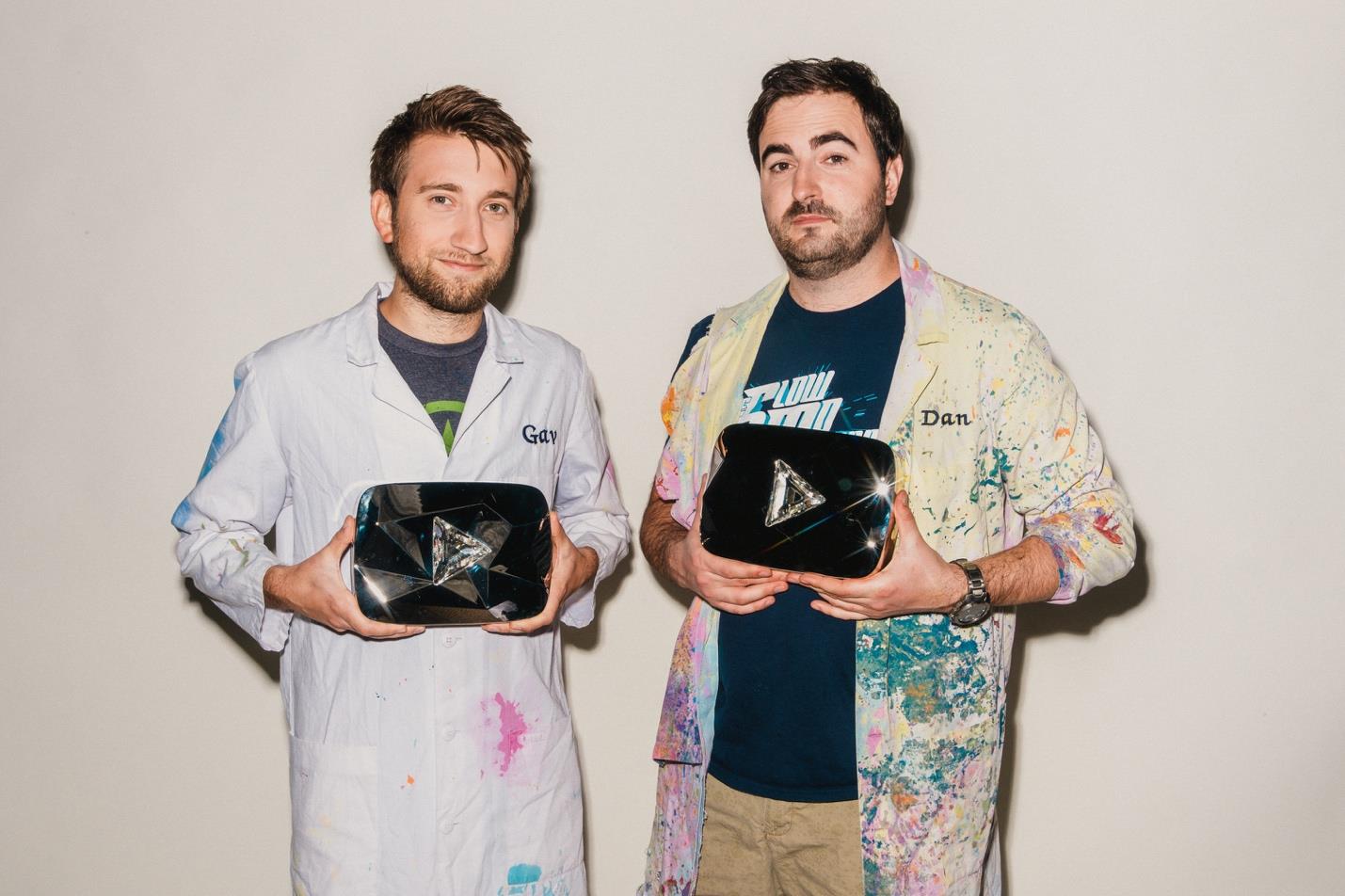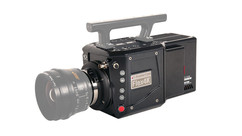
What initially attracted you to slow-motion versus more traditional cinematography?
I always thought slow-motion was cool from a young age. I remember watching a lot of slow-motion instant replays during football games. I also liked The Matrix and the fact that you ended up seeing stuff that you've seen a million times but in a completely new way.
I also liked the concept that you're taking a bunch of still pictures, so you could apply basic still photography knowledge and do it fast. In 2004, I met John Hadfield, owner of Green Door Films. We lived in the same town, it turned out. I worked for him for free for about a year and then became his Phantom Technician on a bunch of different shoots.
John had the only two Phantoms in the UK on the commercial circuit at the time. Then there was the recession, and we suddenly got much less busy. So, I thought, might as well start a YouTube channel during the downtime. John let me borrow his cameras and goof around with them. I got to practice things I wouldn't have been allowed to do on someone else's set.
I noticed a small gap in the market on YouTube, where there wasn't a lot of high-speed. There were mostly mute, slow-mo clips that were never presented in context. I decided to create a hosted, experimental show.
How do you choose episode subjects?
There's just tons of inspiration in every direction really - we have a long list. Occasionally, we'll see something on Reddit, or something will get tweeted to us or appear in a comment on a YouTube video. Our list is getting longer faster than we can shoot it.
Do you have a favorite episode?
My favorite changes quite a lot. We did a travel show last year for YouTube Originals called Planet Slow Mo, where we got to go to some really fun locations. We filmed lightning in Singapore at 103,000 fps with a Phantom v2512 and geysers in Iceland. I enjoyed the nature-based subjects. But then I also like watching Dan jump off a ladder into a thousand mousetraps. So, it varies.
What's your production process on The Slow Mo Guys?
I live in Austin, and Dan lives in the UK. So, I'll fly him over, and then we'll spend a week or two coming up with ideas, planning stuff, then we'll try and shoot ten videos in my backyard. Our newer videos take longer to shoot because the ideas are much more complicated. We used to be able to do a few videos in one day, but now it's usually one per day or maybe one across two days. Then, every few weeks, I'll edit one of the ones that we shot after Dan's gone.
We try to shoot with no crew. Our YouTube Original series had tons of crew, maybe over 80 people at some points, because of the large stunts we were doing. But usually, when it's in the backyard, it's just us two because we feel we can work at our own pace. It makes our on-screen banter more relaxed when there's no one staring or waiting on us to not mess up the intros and stuff like that.
Dan takes care of everything subject based. If we're doing paint on a speaker, he'll be mixing the paint and operating all the speakers. I take care of everything on the camera side. I'll be pulling focus, making sure the audio is recording, framing shots, setting the frame rate, doing data management, etc.
How do you decide which frame rate to shoot at for a given subject?
Usually, I film at the camera's maximum frame rate depending on how much light we have. You can always speed something up in post if it's too slow, but I'd rather have the maximum speed. If we're shooting at night with sparks flying through the air, I want long streaks and motion blur that you wouldn't get at 1,000 fps. So, I'll go to 120 or 360 fps.
What cameras do you use for the standard frame rate footage?
We typically just used the best DSLR available at the time for our needs. I started on a Canon 7D, and then we had a Panasonic Lumix GH5S for a long time. Now we have a RED that we shoot with because a lot of the time companies license our footage based on the technical parameters.
YouTube had a big push for 4K a few years ago, and they use a lot of our material to promote Chromecast and the YouTube app because it's all beautiful crisp, colorful 4K footage. I figured the same thing would eventually happen with 8K. So, for the past year, we've been shooting everything non-Phantom in 8K, and we upscale the Phantom material to match. Everything looks pretty nice on a new TV.
Do you prefer to work with natural light or lighting equipment?
We try to do as much outdoors as possible in the sun. If we need a controlled environment without wind, dust, or weather, we have a small lighting setup with a 12K LED. But we try to do as much outdoors as possible because it's one less thing to worry about for our crewless shoots.
What's your post-production workflow?
I import into DaVinci Resolve and then edit in Final Cut X. You used to have to do long conversions of the Phantom .CINE RAW files. Now we use the Glue Tools Phantom Cine Toolkit plugin for Mac, which enables them for ProRes compatible apps like Final Cut Pro and Adobe Premiere. You don't necessarily have to jump through all these hoops to get to the edit anymore.
I do all the speed ramping in Final Cut, you make a couple of keyframes, and it does a nice natural ramp between them. That's especially useful when we're shooting up to 100,000 fps because typically, our raw file can be hours long. You only really want that one, maybe the 20-second moment where it's the action happening in super slow-mo, and everything else is painfully slow at that point. We do tons of speed ramping when it comes to the faster stuff.
How do you handle raw footage storage?
I have a network server with around 130 terabytes for backups. I also have a 12-drive RAID with about 144 terabytes, where I store all my working files and can quickly access all of my previous exports. A lot of the times we'll reference older videos in new episodes, so I can quickly grab the full master file. In total, we've used up maybe 400 terabytes across all of the storage, and we're approaching half a petabyte.
How do you achieve 13 million-plus subscribers on YouTube?
Consistency is essential. I've seen a lot of channels that try and chase trends or pivot their content to match what they think the audience wants. We've been doing the same consistent thing coming up on a decade now on YouTube. We just have to keep making content that engages people.
But it's easy when you have access to this amazing equipment. You can think of something and immediately be shooting. Then millions of people will watch it because it has that appealing factor to it. The hard part is getting it off the ground, getting people aware of the channel. Once we had our giant balloon video hit over a million views in one day, it was all go from there because so many people would check back in when we had a new video. You can retain an audience for quite a long time that way.
Which other YouTube channels do you watch?
I enjoy a lot of educational and science channels, a lot of science channels. Smarter Every Day is one of my favorites. It's run by a smart engineer in Alabama named Destin, who also works with Phantoms. I'm not so much into vloggers and the prank channels, but I do like cool science.
What are your plans for the future?
We're going to keep doing what people want to see, which is what we've been doing this whole time. We very much enjoy shooting on our own in the backyard. So, we probably won't do another travel show because it's quite time-consuming, even though we got some really good stuff. I hope we'll get our hands on a new Phantom. I'm not sure what it will be, but hopefully, we'll get ahold of one and do more epic stuff.
Responses have been lightly edited for space and clarity.
















AbelCine encourages comments on our blog posts, as long as they are relevant and respectful in tone. To further professional dialog, we strongly encourage the use of real names. We reserve the right to remove any comments that violate our comment policy.
AbelCine publishes this blog as a free educational resource, and anyone may read the discussions posted here. However, if you want to join the conversation, please log in or register on our site.
We use Disqus to manage comments on this blog. If you already have a Disqus account registered under the same email as your AbelCine account, you will automatically be logged in when you sign in to our site. If not, please create a free account with Disqus using the same email as your AbelCine account.